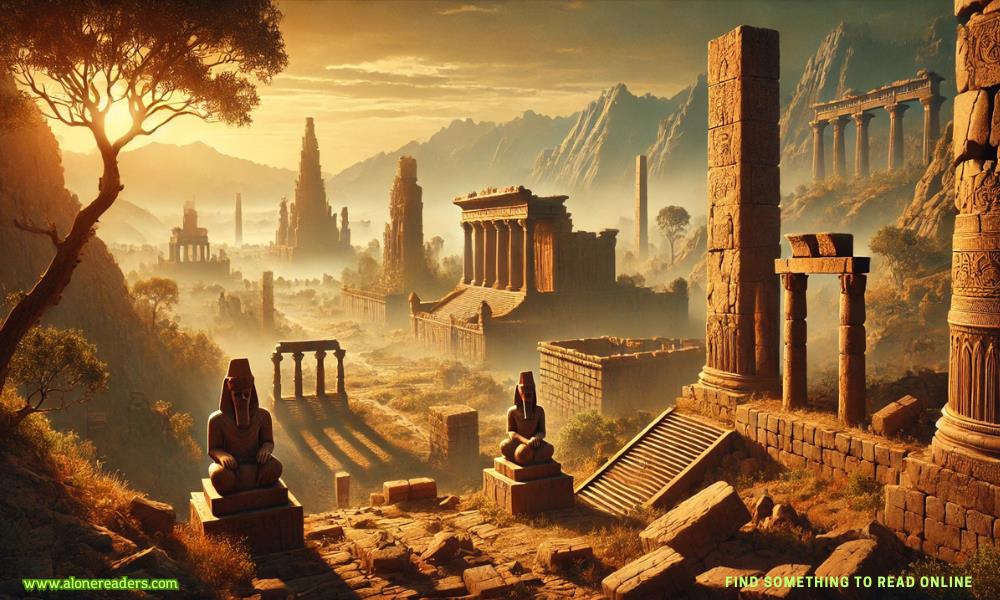
The world has witnessed the rise and fall of countless civilizations, each leaving a unique mark on history. While the tales of the Roman and Egyptian empires are widely known, other ancient civilizations—often overlooked—have also played vital roles in shaping human culture, technology, and society. From Mesopotamia to the Indus Valley, these "forgotten empires" laid the foundation for many aspects of the modern world, from written language to complex architecture.
In this journey through ancient civilizations, we'll uncover some of the lesser-known yet highly influential empires, exploring their achievements, their mysteries, and their legacy.
Often dubbed the "Cradle of Civilization," Mesopotamia, situated between the Tigris and Euphrates rivers in modern-day Iraq, is one of the oldest known human settlements. This civilization laid the groundwork for many fundamental aspects of society, including writing, governance, and agriculture. The Sumerians, Akkadians, Babylonians, and Assyrians each contributed significantly to Mesopotamian culture, advancing mathematics, astronomy, and literature.
Key Achievements:
Flourishing around 2500 BCE in what is now Pakistan and northwest India, the Indus Valley Civilization (IVC) was highly advanced in urban planning and sanitation. Cities like Mohenjo-Daro and Harappa reveal an intricate understanding of architecture and civic infrastructure, including drainage systems and standardized weights.
Key Achievements:
The Hittite Empire, based in Anatolia (modern-day Turkey) around 1600 BCE, is known for its mastery of ironwork and military prowess. The Hittites were among the first to work with iron, giving them a technological edge in warfare and contributing to the onset of the Iron Age.
Key Achievements:
On the island of Crete, the Minoan civilization thrived between 2700 and 1400 BCE. Known for their sophisticated art, palaces, and trade networks, the Minoans greatly influenced early European culture. Their labyrinthine palaces, particularly at Knossos, continue to inspire awe for their complexity and elegance.
Key Achievements:
The Kingdom of Kush, centered around the Nile River south of Egypt, was a powerful African civilization that flourished from around 1000 BCE to 300 CE. Known for its impressive pyramids and as the first African civilization to rule Egypt as the "Black Pharaohs," Kush had a complex society with a rich cultural heritage.
Key Achievements:
Centered in what is now Ethiopia and Eritrea, the Aksumite Empire flourished from around 100 CE to 940 CE and was one of the great trading powers of ancient Africa. Known for its stelae (stone obelisks) and adoption of Christianity, Aksum was a beacon of religious and cultural diversity.
Key Achievements:
Emerging around 1200 BCE along Mexico's Gulf Coast, the Olmec civilization is considered the "mother culture" of Mesoamerica, influencing later civilizations like the Maya and Aztecs. They are known for their colossal stone heads and advancements in mathematics and astronomy.
Key Achievements:
In the highlands of Peru, the Chavin civilization thrived from approximately 900 to 200 BCE. Known for their stone temples and mysterious art styles, they played a pivotal role in Andean cultural development.
Key Achievements:
The Phoenicians, originating in the Levant (modern-day Lebanon), were renowned for their seafaring prowess, establishing colonies across the Mediterranean. From 1500 BCE onward, they connected diverse cultures and spread the first widely used alphabet.
Key Achievements:
Legacy of Forgotten Empires
The impact of these forgotten empires is deeply embedded in today’s world, influencing language, architecture, religion, and social structure. Through ongoing archaeological efforts, our understanding of these civilizations continues to evolve, offering insights into how human societies developed and interacted.
Understanding the legacy of these empires illuminates humanity's shared past and the ingenuity of ancient cultures that once thrived. Although forgotten by history, these civilizations remind us of the diversity and resilience that define human civilization—a legacy we continue to build upon.